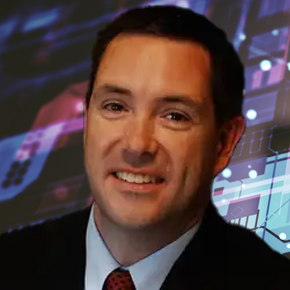October 4, 2022
Sustainability Reporting: the EU Taxonomy

Transcript
If you manufacture within the European Union, or if you’re a global company that does business within the EU, then you’ve thinking a lot about manufacturing sustainability. The EU’s 2030 climate objectives got real for manufacturers with a publication of the taxonomy for sustainable activities. This European Commission document sets out six objectives that all companies must now monitor to prove that their products and investments qualify as environmentally sustainable.
If they succeed, companies may gain cheaper access to financing and capital, but it isn’t easy to make a difference on a metric you’ve never tracked before. And if you’re a global manufacturer making hundreds of different products, composed of thousands of different parts from all around the world, the job of calculating your sustainability is more than just a difficult math problem. It’s a logistical nightmare. How can manufacturers not only adapt to these new regulations but compete and win based on them? My guest today is here to answer this question. Stefan Schmid has spent the past two decades helping German manufacturers transform and compete on the basis of data-driven intelligence from Dassault systems he joined aPriori where he has been instrumental in bringing ideas for digital transformation into the supply chain of major EU companies. Stefan Schmid, welcome to the podcast.
While you listen, you can take a look at the blog article: Are you Prepared for New EU Taxonomy Sustainability Reporting Requirements?
Stefan Schmid: Thank you, Leah. Thank you very much.
Leah Archibald: My first question to you is how does the European Commission’s taxonomy for sustainable activities change what it means to compete for companies within the EU?
Stefan Schmid: Let’s answer this question quite shortly. The environment becomes a price. That is the point. The economy, no matter in which branch companies are working, they’re used to the fact that materials, labor, that has a price and all of a sudden now the environment gets a price tag and that’s a substantial change because now the trade-off between cost of a product and the environmental impact of a product becomes an imperative for the companies.
Leah Archibald: And that’s never been true before.
Stefan Schmid: This is now imminent. I suspect the environment always had a price, but now, we know it has a price tag. Now it needs to be respected. And there is a clear methodology. Now it’s being established how this price becomes transparent.
How to Make a Sustainable Product
Leah Archibald: So let’s dive into the details here. The new taxonomy divides the concept of how to make a sustainable product into six activities. There’s climate change mitigation, there’s climate change adaption, there’s sustainable use of water and protection of water and Marine resources. There’s a transition to a circular economy, then there’s pollution prevention and control. And lastly, there’s protection and restoration of biodiversity and ecosystem. Now does a company need to focus on all six activities successfully qualify as sustainable or can they employ a divide and conquer strategy?
Stefan Schmid: No, To put it negative, no greenwashing and selecting one and violating the others would be greenwashing. The rule is if you want to be compliant with the taxonomy regulation you need to overachieve at least in one area but you may not violate any of the others.
Leah Archibald: From the point of view of manufacturers looking at this list of sustainable activities, is there one that’s likely to affect manufacturers more either because it’s more costly to implement or more difficult to track?
Stefan Schmid: Yeah. If we look at our industries, our customers that are deeply involved in mechanical engineering, water, is one aspect. Energy consumption is the next. I think one is climate protection is the one where things like CO2 consumption is touched. The point really in this taxonomy, is that, is it water? Is it energy? Is it CO2 consumption?
Sustainability Reporting
Stefan Schmid: The companies being affected by sustainability reporting under the EU taxonomy have to either prove that they are sustainability compliant or over-achieve in one area of sustainability.
And the question now is how? How can they prove? How can a car producer or a plane producer, how can he prove that his way of working is most economically and environmentally effective?
The trouble that the companies have today, the headache that this is causing is that the companies have a very good idea how their goods are produced, they know what the process of production is but they don’t know to what extent this is optimal with respect to environmental purposes and how this can be optimized. So, one, they cannot tell, yes, we are optimal. And two, they cannot tell how to improve it because there is no, let’s say, taxonomy-oriented description of their process.
This sustainability reporting is exactly what aPriori is doing by providing methods of describing industrial processes. This is the core of what aPriori is doing. This is now helping the business a lot.
Sustainability Software
Leah Archibald: So the challenge for CFOs is that they now need sustainability software because they have to track metrics that they’ve never tracked before.
Stefan Schmid: Indeed, I have talked to many CFOs recently and it causes headaches because as a core of proving sustainability, it means for them that they have to describe what they are doing. Industrial processes can be very, very detailed and complicated, and it helps to have advanced sustainability software. aPriori has spent the last 20 years to do exactly that. How aPriori has been analyzing cost, drilling very deep, describing very concrete and industrial process and putting a price tag on it, that applies now. This makes aPriori the ideal sustainability software, because aPriori has done the job already. That can be a tremendous shortcut for many industrial leaders to say, “Okay, we get around this tremendous amount of work of describing all our processes by using the processes that are thoroughly described in aPriori already.”
Leah Archibald: So what I’m hearing from you is that companies that have already implemented this tool because they want to optimize their manufacturing processes or they’ve wanted to track costs throughout their supplying chain, now they can use the same model of their manufacturing processes in a sustainability software approach, to track carbon emissions, or to track water usage or to track other sustainability metrics.
Stefan Schmid: Exactly that. This is what I mean with our shortcut: aPriori has invested so many years of work in exactly that. Initially it was for a different purpose: manufacturability. But now as aPriori is directing the technology not only to cost and processes and manufacturability, but also to sustainability.
Reduce Cost of Production
Leah Archibald: So what do you think will be the real economic impact of these changes to the manufacturer’s bottom line? Will it increase or reduce cost of production?
Stefan Schmid: The impact will be that and we all will feel it. Taxonomy is about how to access funds. So the point here is for the industry only by complying with those regulations do they have the chance to get low interest rates. If you want to be competitive as an industry in the future, you need to access cheap funds. Only then you can continue to develop your products cost effectively and for competitive prices and offer them on the market. If companies comply, then sustainability requirements will reduce cost of production.
Leah Archibald: And when you mention the competitive advantage of complying with sustainability – reducing cost of production – I think of a different legislation that we had several years ago in the United States, Sarbanes Oxley, which when companies first started having to comply to these financial regulations, it was the biggest headache. It was the biggest suck of funds for the initial two years, but then once they brought the financial management systems on board, then they actually saw returns increase because there was less fraud in this particular case. So I imagine that once companies have brought this methodology into their processes in the EU, and then later in other parts of the world to track sustainability, I imagine it will have additional financial benefits of putting the rest of their house in order.
Stefan Schmid: I subscribe that 100%. I mean, Simon Oxley in those days, I used to work in a company that had to be delisted because they could not comply with that.
Leah Archibald: Really?
Stefan Schmid: Really, yes, that it was just undoable. The company was too small to comply, but nowadays the company is still alive and that’s all fine. They have gone through this nightmare. And the reason why they had to be delisted was because some things were not properly documented and now things are in order and that part of the industry is now better. And sometimes, let’s face it, the industries need a certain level of push in the right direction and maybe we are facing yet another one of those pushes.
Leah Archibald: Stefan Schmid, this has been very enlightening. Thank you for joining me on the podcast today.
Stefan Schmid: I’m delighted. Thank you.







